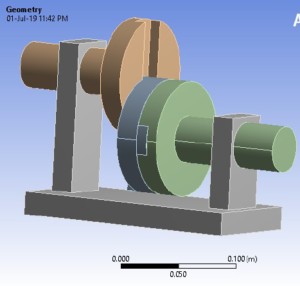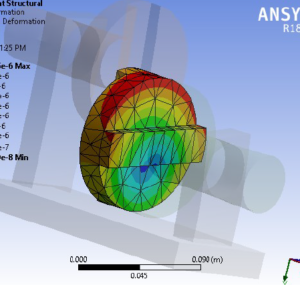
Performance Assessment of the Oldham Coupling
The imperative role of proper shaft alignment in ensuring safe and reliable mechanical operations has long been established. Shaft misalignment can lead to a cascade of issues, including elevated noise levels, frequent vibrations, bearing failures, and lubrication problems. Addressing these concerns is crucial not only for the longevity of machinery but also for optimizing torque and ensuring efficient power transfer. Among the various coupling mechanisms available, the Oldham coupling stands out for its capacity to facilitate proper alignment and power transfer between non-coaxial shafts without physical joints.

This study focuses on constructing a simulation model in CATIA for a driver and a driven shaft connected by an Oldham coupling. The inherent alignment capabilities of the Oldham coupling are harnessed to ensure proper shaft alignment, and the performance readings obtained through ANSYS contribute to understanding the efficiency of power transmission.
The primary objective of this research is to delve into the performance analysis of the Oldham Coupling, employing a comprehensive approach that involves CATIA, and ANSYS. In the realm of FEM analysis, the study delves into the intricate dynamics of the Oldham Coupling, shedding light on its performance under various conditions. The examination encompasses alignment aspects and power transmission efficiency, vital for understanding the coupling’s behavior in real-world applications.
The findings derived from this research contribute not only to the understanding of Oldham Coupling performance but also underscore the significance of employing advanced computational methodologies. The synergy of CATIA, and ANSYS, serves as a powerful toolkit, offering insights into the intricate interplay between components and their impact on overall system performance.

In conclusion, this study goes beyond mere simulation, providing a deeper understanding of the Oldham Coupling’s behavior underlining the efficiency of power transmission. By navigating through alignment intricacies and leveraging advanced computational tools, the research stands as a testament to the ongoing pursuit of precision and reliability in mechanical systems. The insights gained pave the way for optimized coupling design and application in diverse engineering scenarios.



